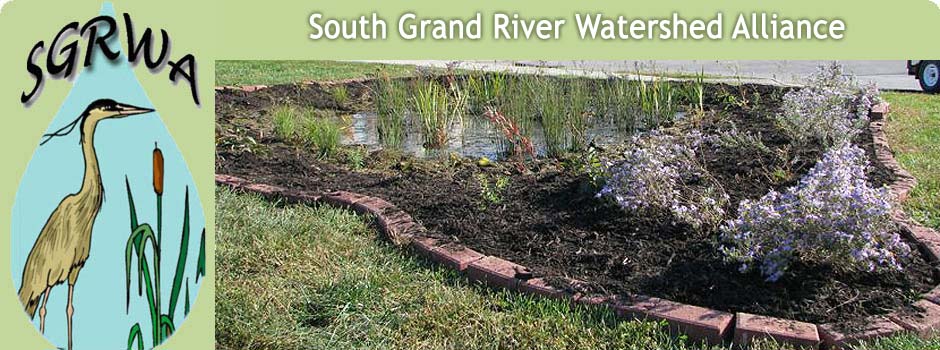By building a beautiful rain garden you can help improve the quality of water in a watershed.
Rain gardens act as miniature wetlands. Natural wetlands are moist environments with a rich diversity of beautiful native flowers and grasses that provide habitat for many birds, butterflies, dragonflies and other wildlife. These wetlands, with the long rooted native plants, serve a very vital function in preventing degradation of the waters in our waterways. They help reduce erosion and flooding by slowing runoff. This slowing of the runoff keeps the water on site longer and allows it to “soak in” to the ground, thus recharging the aquifer. Another valuable function is that many pollutants are trapped and used by the plants instead of being washed into our streams.
With increasing amounts of the landscape being covered with impervious parking lots, streets, buildings, etc., more and more runoff is channeled into the storm water system which contributes to water quality degradation.
The runoff from an average roof is a very significant amount in a year’s time. You can capture some of this runoff and keep it from entering the storm water system by making a rain garden. A rain garden can be any size and is not difficult to make. There are various sources available with detailed instructions and planting suggestions. The Grow Native Program offers a brochure and you can visit www.grownative.org to find sources of plants. Mid-America Regional Council (MARC) provides a brochure and information at www.marc.org/water Brochures can also be obtained by contacting the South Grand River Watershed Alliance at www.sgrwa.org
Start planning now and next summer you could be enjoying a wonderful rain garden and helping to improve the quality of the water too!
This information provided by the South Grand River Watershed Alliance.
